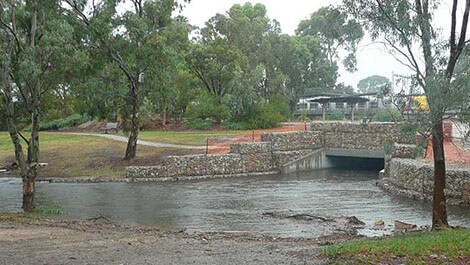How Does The Stormwater Management System Work In Adelaide?

Stormwater simply refers to rainwater plus everything else the water carries in its course. As stormwater flows, it carries along organic matter, soil, fertilizers, trash and oil residues. Once these impurities flow into downstream rivers or streams, they contaminate the water.
Therefore, stormwater management is necessary toreduce water pollution and prevent flooding in homes in Adelaide. A plumber must develop the best system for your home after studying how the stormwater flows.
So, how does a stormwater system work in Adelaide to prevent flooding and contamination of natural water sources and the environment?
Stormwater Systems: How they Work
Typically, rainwater flows off roofs and goes down into drainpipes. The water then goes through ground drainage, into pipes or other systems set up underground. Ultimately, the stormwater is expelled through discharge drains. Some houses in rural areas use rainwater tanks as a storage system. Storage tanks work perfectly in these areas since access to the primary water source is restricted.
Here are other systems that deal with stormwater in Adelaide:
Pump-Based Systems
Not all areas have a natural slope. As such, gravity alone cannot work in these areas. Pumps come in handy to provide the extra push, especially where stormwater systems include rainwater tanks.
Gravity-Fed Systems
In this case, plumbers set up drainage pipes strategically at an angle. This positioning allows the stormwater to go down the drainage system using gravity. The sizes of the pipes differ depending on the area you’re working with. The rain intensity in a region also matters when setting up drainage pipes.
Stormwater Harvesting and Discharge
This managementsystem is popular in populated areas. Large stormwater channels and pipes are used to transport water directly into natural rivers and lakes. In other cases, the water is released into man-made lakes or the sea.
As expected, this method of management is detrimental to the environment. It leads to pollution and wastage of fresh water.
Water-Sensitive Design Systems
The WSUD, or water-sensitive urban design, imitates the natural balance of water in an area before any construction occurred. The WSUD system slows stormwater, allowing usage and filtration on site.
Once the water reaches the river, stream or lake, it is clean since soil and plants have filtered it before flowing into downstream waterways. Individual households have several options to help increase water percolation into the soil instead of water flowing into stormwater systems. These options include:
- Permeable paving on footpaths and driveways
- Raingardens designed for infiltration
- Vegetation and lawns to detain stormwater
Some cases call for the installation of perforation pipes under infiltration areas. These pipes direct excess stormwater into stormwater systems. Always check with local government regulations for drainage before using the WSUD system for management.
Metropolitan areas of Adelaide, Mitcham, Burnside, West Torrens, and Unley are prone to flooding. As a result, the local governments came up with the Brown Hill Creek stormwater project. The project will protect more than 200,000 residents from being affected by stormwater flooding.
Several methods exist to reduce the negative effects of stormwater on the environment. While some systems are easy to implement for individual households, others need the intervention of the local governments to work efficiently.
Either way, an efficient management system is necessary to mitigate stormwater impacts in Adelaide and other metropolitan areas.
